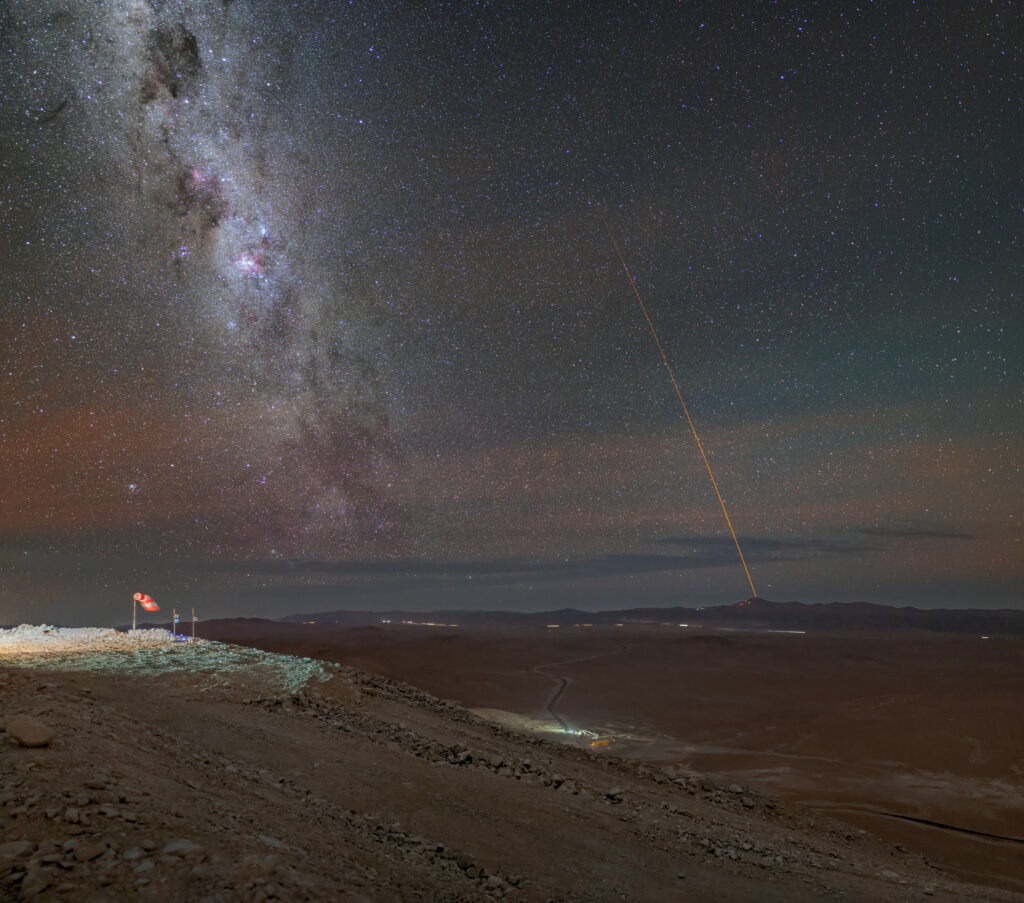The presented image was taken at the top of the Chilean Cerro Armazones mountain. It shows a magnificent night sky dominated by a strip of the Milky Way and a laser beam striking the sky in the distance, somewhat resembling a kind of space beacon. In the photo, you can also see a reddish glow near the horizon. This is a natural phenomenon called the glow of the night sky.

The Cerro Armazones Mountain has a rich astronomical history. It was once considered as a location for the ESO’s Very Large Telescope (VLT). But in the end, the complex found a home on the nearby Cerro Paranal Mountain. Since it emits a laser beam captured in the picture. This is part of the process of creating artificial stars in the upper atmosphere. They allow astronomers to calculate the parameters of atmospheric distortions and adjust the optics in such a way as to remove them when observing space objects.
But, although Cerro Armazones was never chosen to host the VLT, astronomers have not forgotten about the mountain. The combination of an extremely dry climate and the almost complete absence of light pollution sources made it the main candidate for the installation of the ESO’s Extremely Large Telescope (ELT) — the next generation optical observatory, which will become the largest on Earth.
The foundation of the ELT was completed earlier this year. At the next stage, the builders will begin the construction of a giant rotating dome with a height of 80 m and a mass of 6,100 tons. Inside it will be placed a 39-meter main mirror consisting of 798 individual hexagonal segments with a total area of 978 m2 and a weight of 132 tons. Thanks to it, the observatory will be able to collect 15 times more light than the largest operating optical telescopes. The total cost of the ELT project is estimated at 1.2 billion euros. According to current plans, the telescope will see its “first light” in 2027.
According to https://www.eso.org
Follow us on Twitter to get the most interesting space news in time
https://twitter.com/ust_magazine

